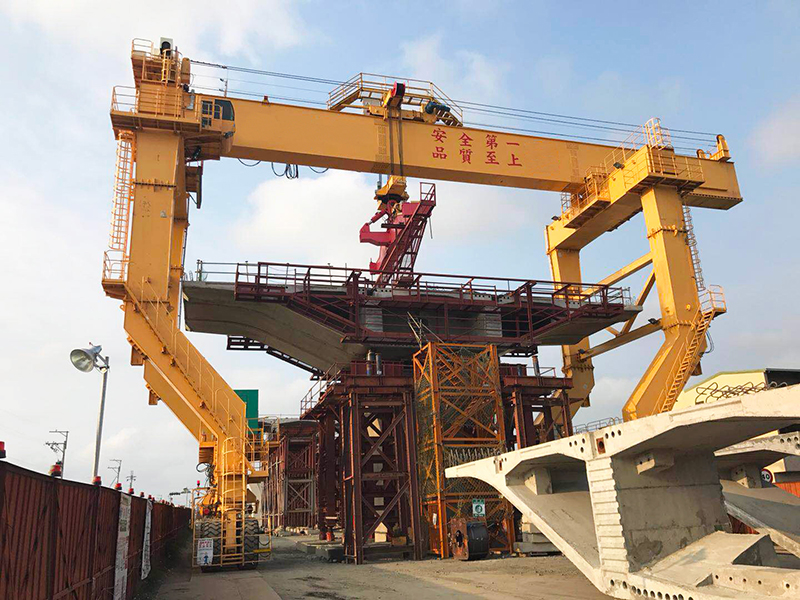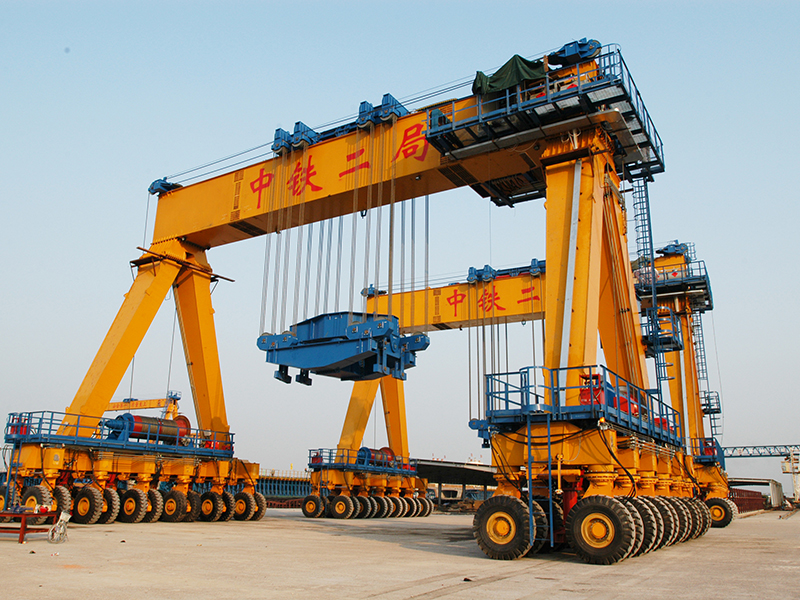Straddle cranes, with their towering frames and distinctive leg-like structures, are ubiquitous in ports, container yards, and industrial facilities across the globe. These colossal machines are designed for one primary purpose: lifting and transporting heavy loads with precision and efficiency. Central to their functionality is the mode of propulsion and power source. In this article, we delve into the fascinating world of how straddle cranes are powered, exploring the diverse methods that drive these giants of the industrial landscape.

Electric Power: The Silent Revolution
In the contemporary landscape of eco-conscious practices and sustainable technologies, electric-powered straddle cranes have emerged as a silent revolution. These cranes are connected to the power grid and draw electricity to drive their operations. The shift towards electric power is driven by environmental concerns and the desire to reduce the carbon footprint associated with industrial operations.
Electric straddle cranes offer several advantages. First and foremost, they produce zero on-site emissions, contributing to cleaner and greener port and industrial environments. The elimination of exhaust fumes enhances air quality, a critical factor in densely populated areas where these cranes are often deployed. Additionally, electric cranes are generally quieter compared to their diesel-powered counterparts, minimizing noise pollution.
Furthermore, advancements in battery technology have paved the way for electric straddle cranes to operate with increased efficiency and autonomy. Lithium-ion batteries, in particular, are becoming popular for their higher energy density, longer lifespan, and faster charging capabilities. These batteries empower straddle cranes to operate for extended periods between charges, optimizing productivity and minimizing downtime.
Diesel Power: The Traditional Workhorse
While electric power gains traction, diesel-powered straddle cranes continue to be the workhorses of many industrial settings. These cranes are equipped with powerful diesel engines that drive hydraulic systems to lift, move, and position heavy loads. The diesel engine provides the necessary torque and power to operate the crane’s various components, including the lifting mechanisms, trolleys, and propulsion systems.
Diesel-powered straddle cranes are known for their robustness and reliability. They can operate in diverse weather conditions and challenging terrains, making them indispensable in ports and terminals worldwide. The ability to refuel quickly also contributes to their operational efficiency, as downtime is minimized during refueling compared to the recharging times associated with electric cranes.
However, the environmental impact of diesel-powered cranes is a growing concern. Diesel engines emit pollutants such as nitrogen oxides and particulate matter, contributing to air pollution. As environmental regulations become more stringent, there is increasing pressure on industries to explore cleaner alternatives or adopt technologies to mitigate emissions from diesel-powered equipment.

Hybrid Power: Bridging the Gap
Recognizing the advantages of both electric and diesel power, hybrid straddle cranes have emerged as a viable solution that seeks to bridge the gap between environmental sustainability and operational flexibility. Hybrid cranes combine the efficiency of electric power with the versatility of a diesel engine.
In a hybrid straddle crane, the electric power source is typically used for routine operations, such as container handling and stacking. During periods of peak demand or when additional power is required, the diesel engine comes into play, providing the extra boost needed for heavy lifting or high-speed maneuvers. This dual-power approach allows for greater fuel efficiency and reduced emissions during standard operations while ensuring that the straddle carrier can handle heavier loads when necessary.
The development of hybrid straddle cranes reflects a commitment to finding a balance between environmental responsibility and operational requirements. These cranes represent a transitional step towards a future where cleaner and more sustainable technologies dominate the industrial landscape.
Automation: The Future of Straddle Crane Power
As the fourth industrial revolution unfolds, automation is becoming increasingly integrated into various aspects of industrial operations, and straddle cranes are no exception. Automated straddle cranes leverage sophisticated control systems to perform tasks without direct human intervention. These systems often incorporate advanced power management strategies to optimize energy consumption and operational efficiency.
Automation in straddle cranes is closely tied to electric power, as the precise control offered by electric systems aligns well with the requirements of automation. Automated cranes can operate with remarkable precision, reducing the risk of accidents and improving overall safety in the workplace. The integration of artificial intelligence and sensor technologies further enhances the capabilities of automated straddle cranes, allowing them to adapt to dynamic environments and optimize their performance.
Conclusion
In the ever-evolving landscape of industrial machinery, the power source of straddle cranes plays a pivotal role in determining their efficiency, environmental impact, and adaptability. Electric, diesel, hybrid, and automated systems each have their unique advantages and challenges, reflecting the complex considerations involved in powering these giants of the industrial world.
The choice of power source for straddle cranes is influenced by a combination of factors, including environmental regulations, operational requirements, and the industry’s commitment to sustainable practices. As technology continues to advance, we can expect further innovations in the propulsion of straddle cranes, shaping the future of these indispensable machines. Whether silently gliding on electric power or steadfastly relying on the reliability of diesel engines, straddle cranes will continue to be the backbone of logistics and material handling operations, propelling industries forward into a new era of efficiency and sustainability. For more info, visit https://steelmillcranes.com/